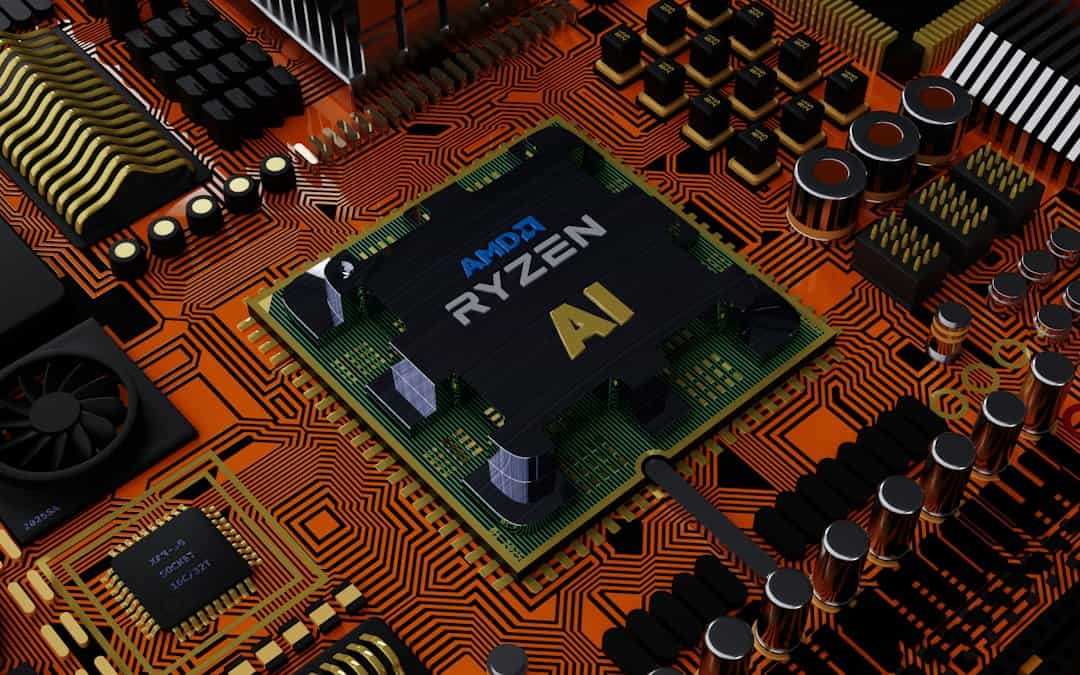Natural Language Processing (NLP) is a branch of artificial intelligence (AI) that focuses on enabling computers to understand, interpret, and generate human language. NLP deep learning is a specialized area within NLP that utilizes neural networks with multiple layers to process and analyze natural language data. Deep Learning, a subset of machine learning, employs complex neural networks to learn patterns and features from large datasets.
When applied to NLP tasks, deep learning algorithms can effectively capture the intricacies of human language, including context, semantics, and syntax. NLP deep learning techniques are used in various applications, such as:
1. Machine translation
2.
Sentiment analysis
3. Speech recognition
4. Text summarization
5.
Question-answering systems
6. Named entity recognition
These advanced AI systems can learn to comprehend the subtleties and complexities of human language, resulting in more accurate and natural interactions between humans and machines. As a result, NLP deep learning has the potential to significantly improve human-computer interactions, making technology more accessible and user-friendly.
The continuous advancements in NLP deep learning are driving innovations in various industries, including healthcare, finance, customer service, and education. As these technologies continue to evolve, they are expected to play an increasingly important role in shaping the future of human-machine communication and interaction.
Key Takeaways
- NLP Deep Learning and AI are interconnected fields that focus on understanding and processing human language using advanced algorithms and models.
- NLP Deep Learning plays a crucial role in AI by enabling machines to understand, interpret, and respond to human language in a more natural and human-like manner.
- Harnessing the potential of NLP Deep Learning for language processing can lead to improved machine translation, sentiment analysis, and text generation, among other applications.
- NLP Deep Learning has various applications in AI, including chatbots, virtual assistants, language translation, and content summarization, which enhance user experience and productivity.
- The challenges in NLP Deep Learning, such as data scarcity and bias, present opportunities for research and development to improve the accuracy and fairness of language processing models.
- Advancements in NLP Deep Learning and AI, such as transformer models and pre-trained language representations, have significantly improved the performance of language processing tasks.
- The future of NLP Deep Learning and AI holds promise for more sophisticated language understanding, improved human-machine interaction, and advancements in various industries, including healthcare, finance, and education.
The Role of NLP Deep Learning in AI
NLP deep learning plays a crucial role in advancing the capabilities of AI systems. By using deep learning algorithms, AI systems can process and understand human language in a more sophisticated way. This enables AI systems to perform tasks such as language translation, sentiment analysis, and speech recognition with greater accuracy and efficiency.
NLP deep learning also allows AI systems to generate human-like language, making interactions with machines more natural and seamless. One of the key roles of NLP deep learning in AI is enabling machines to understand the context and meaning of human language. This is essential for tasks such as language translation, where understanding the nuances of language is crucial for accurate translation.
NLP deep learning also plays a vital role in enabling AI systems to analyze and interpret large volumes of text data, allowing for more advanced text mining and analysis. Overall, NLP deep learning is essential for advancing the capabilities of AI systems in understanding and processing human language.
Harnessing the Potential of NLP Deep Learning for Language Processing

NLP deep learning has the potential to revolutionize language processing by enabling machines to understand and interpret human language in a more sophisticated way. By using deep learning algorithms, NLP systems can learn to understand the nuances and complexities of human language, allowing for more accurate and natural language processing. This has significant implications for tasks such as language translation, sentiment analysis, and speech recognition, where understanding the context and meaning of language is crucial for accurate processing.
One way to harness the potential of NLP deep learning for language processing is through the development of advanced neural network models. These models can be trained on large volumes of text data to learn the patterns and structures of human language, enabling more accurate and nuanced language processing. Additionally, leveraging techniques such as transfer learning can enable NLP systems to apply knowledge from one language processing task to another, improving overall performance.
By harnessing the potential of NLP deep learning, we can significantly improve the capabilities of language processing systems.
Applications of NLP Deep Learning in AI
| Application | Description |
|---|---|
| Machine Translation | Using NLP deep learning to translate text from one language to another. |
| Sentiment Analysis | Analyzing and categorizing opinions expressed in text as positive, negative, or neutral. |
| Text Summarization | Automatically generating a concise and coherent summary of a larger text. |
| Named Entity Recognition | Identifying and classifying named entities in text into predefined categories such as names of persons, organizations, locations, etc. |
| Question Answering | Developing systems that can understand and respond to questions posed in natural language. |
NLP deep learning has a wide range of applications in AI, spanning across various industries and domains. One of the key applications of NLP deep learning is in language translation, where deep learning algorithms can be used to accurately translate text from one language to another. This has significant implications for global communication and business, enabling more accurate and natural language translation.
Additionally, NLP deep learning is used in sentiment analysis, where AI systems can analyze and interpret the sentiment expressed in text data, enabling businesses to understand customer feedback and market trends. Another important application of NLP deep learning in AI is in speech recognition, where deep learning algorithms can be used to accurately transcribe spoken language into text. This has significant implications for accessibility and user interface design, enabling more natural interactions with technology through speech.
Additionally, NLP deep learning is used in text generation, where AI systems can generate human-like text based on input data. This has applications in content generation, chatbots, and virtual assistants, enabling more natural and engaging interactions with machines.
Challenges and Opportunities in NLP Deep Learning
While NLP deep learning holds great potential, it also presents several challenges that need to be addressed. One of the key challenges in NLP deep learning is the need for large volumes of labeled data for training neural network models. Gathering and labeling such data can be time-consuming and expensive, limiting the scalability of NLP deep learning applications.
Additionally, NLP deep learning models often require significant computational resources for training and inference, posing challenges for deployment on resource-constrained devices. However, there are also opportunities to address these challenges and advance the capabilities of NLP deep learning. One opportunity lies in the development of transfer learning techniques, which enable NLP models to leverage knowledge from one task or domain to improve performance on another task or domain.
This can help mitigate the need for large volumes of labeled data and improve the scalability of NLP deep learning applications. Additionally, advancements in hardware acceleration technologies such as GPUs and TPUs can help address the computational challenges associated with NLP deep learning, enabling more efficient training and deployment of NLP models.
Advancements in NLP Deep Learning and AI

In recent years, there have been significant advancements in NLP deep learning and AI that have expanded the capabilities of language processing systems. One major advancement is the development of transformer-based models such as BERT and GPT-3, which have achieved state-of-the-art performance on various NLP tasks. These models leverage attention mechanisms to capture long-range dependencies in text data, enabling more accurate and nuanced language processing.
Additionally, advancements in transfer learning techniques have enabled NLP models to leverage knowledge from large pre-trained models to improve performance on specific tasks. Another significant advancement in NLP deep learning is the development of multimodal models that can process both text and other modalities such as images and audio. These models enable more comprehensive understanding of multimodal data, leading to more sophisticated language processing capabilities.
Additionally, advancements in hardware acceleration technologies such as GPUs and TPUs have improved the efficiency of training and deployment of NLP models, enabling more scalable and accessible applications of NLP deep learning.
The Future of NLP Deep Learning and AI
The future of NLP deep learning and AI holds great promise for advancing the capabilities of language processing systems. One key direction for the future is the development of more efficient and scalable NLP models that can process and understand human language with greater accuracy and nuance. This includes advancements in transfer learning techniques, hardware acceleration technologies, and model architectures that enable more efficient training and deployment of NLP models.
Another important direction for the future is the integration of multimodal capabilities into NLP models, enabling more comprehensive understanding of multimodal data. This has significant implications for tasks such as content generation, virtual assistants, and accessibility technologies, enabling more natural interactions with machines across different modalities. Additionally, advancements in ethical considerations such as bias mitigation and fairness in NLP models will be crucial for ensuring responsible deployment of NLP deep learning technologies.
In conclusion, NLP deep learning plays a crucial role in advancing the capabilities of AI systems in understanding and processing human language. By harnessing the potential of NLP deep learning, we can revolutionize language processing across various domains and industries. While there are challenges to address, there are also significant opportunities for advancements in NLP deep learning that will shape the future of AI and language processing technologies.
The future holds great promise for more efficient, scalable, and comprehensive NLP deep learning models that will enable more natural interactions between humans and machines across different modalities.
If you’re interested in the intersection of technology and virtual worlds, you may want to check out this article on the metaverse. The metaverse is a collective virtual shared space, created by the convergence of virtually enhanced physical reality and physically persistent virtual reality. It’s a fascinating concept that has implications for everything from social interaction to business and entertainment. And as the metaverse continues to develop, it’s likely that natural language processing and deep learning will play a significant role in shaping its future.
FAQs
What is NLP (Natural Language Processing) in deep learning?
NLP (Natural Language Processing) in deep learning is a branch of artificial intelligence that focuses on the interaction between computers and humans using natural language. It involves the development of algorithms and models that enable computers to understand, interpret, and generate human language.
What is deep learning in the context of NLP?
Deep learning is a subset of machine learning that uses neural networks with multiple layers to learn from data. In the context of NLP, deep learning techniques are used to process and understand natural language, such as text and speech, to perform tasks like language translation, sentiment analysis, and text generation.
What are some applications of NLP in deep learning?
Some applications of NLP in deep learning include language translation, sentiment analysis, chatbots, speech recognition, text summarization, and language generation. These applications are used in various industries such as healthcare, finance, customer service, and marketing.
What are some popular deep learning models used in NLP?
Some popular deep learning models used in NLP include recurrent neural networks (RNNs), long short-term memory (LSTM) networks, convolutional neural networks (CNNs), transformer models (e.g., BERT, GPT-3), and deep belief networks. These models are used for tasks such as language modeling, text classification, and sequence-to-sequence learning.
What are the challenges in NLP deep learning?
Challenges in NLP deep learning include handling ambiguity and context in natural language, dealing with large and complex datasets, understanding nuances in language, and addressing biases in language models. Additionally, domain-specific language and lack of labeled data can also pose challenges in NLP deep learning.











Leave a Reply